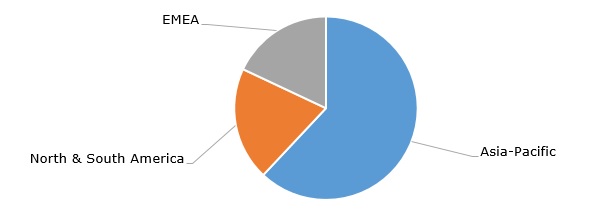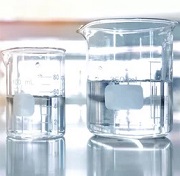Perchloroethylene (PERC or PCE), also known as tetrachloroethylene or tetrachloroethene, is a volatile chlorinated hydrocarbon used in various industrial and consumer applications. PERC’s key application areas include (a) a dry cleaning agent (in use since the 1940s and is currently the most popular dry cleaning agent), (b) an industrial solvent for aerosol products, coatings, adhesives, etc, (c) a metal-degreasing agent, (d) a chemical intermediate used in the production of chlorinated compounds, such fluorocarbons, employed as refrigerants, and (e) a platinum-based catalyst-regenerating chemical for the oil refining industry to maintain catalyst activity and stability in catalytic reformer and isomerization units. Perchloroethylene can be manufactured through the reaction of oxyhydrochlorination by mixing hydrocarbons, such as propane/propylene, or chlorinated organics (e.g. ethylene dichloride) with hydrochloric acid and oxygen inside a catalytic fluidized bed reactor. Asia Pacific accounts for the largest share of PERC production.
Perchloroethylene: structure of the global production by region

According to the U.S. National Toxicology Program, perchloroethylene is “reasonably anticipated to be a human carcinogen.” The International Agency for Research on Cancer, (affiliated to the World Health Organization of the United Nations), also linked perchloroethylene to carcinogenicity. This poses a serious risk for the perchloroethylene market and supports arguments to introduce an international ban on the use of PERC in residential dry cleaning facilities (such a ban already exists in several countries).
Driven by health and environmental considerations, OxyChem, the chemical division of Occidental, specifically states that it sells perchloroethylene for feedstock use only and does not sell the chemical for the dry cleaning industry. OxyChem’s performance in H1 2024 was strong supported by robust sales across nearly all product lines despite fluctuating ethylene prices. Unlike OxyChem, Olin supplies small amounts of its perchloroethylene under the DOWPER tradename for the dry cleaning industry, though the bulk of its perchloroethylene is targeted at solvents and intermediate applications. Olin’s performance in H1 2024 in the chlor alkali products and vinyls segment, which subsumes PERC production, was worse as compared to the same period a year earlier. The decrease was caused by lower caustic soda pricing, though the company managed to reduce the costs for raw materials and operations.
Find a detailed analysis of the perchloroethylene market in the in-demand research report “Perchloroethylene (PERC): 2024 World Market Outlook and Forecast up to 2033”.
